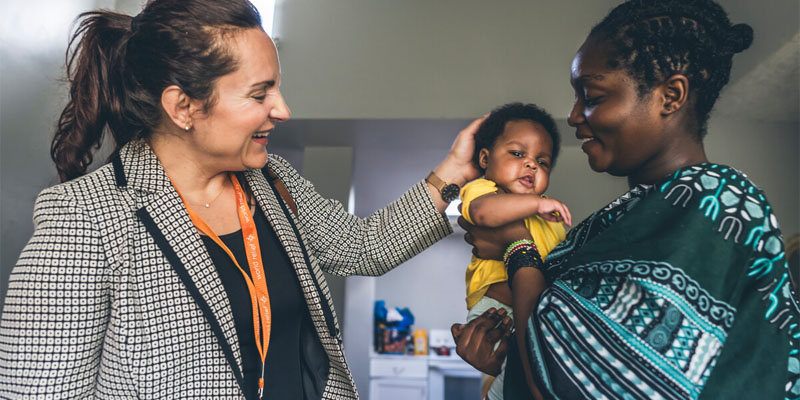How Immigrants Adapt with Support from our Counseling Center: Environmental Change
Written by Sonnie Mwangi, Mental Health Counselor & Christine Cummings, Director of Counseling Center
Change is a challenge to everyone. Think about the most natural thing as a birthday. Each year, as we age, our bodies change, growing when you are younger and bringing more aches when you are older. The first thing refugees and other immigrants encounter in the U.S. is change. Every day they face critical adjustments like learning a new language, adapting to new cultural norms, adjusting to different weather and food, and so much more. These changes vary from physical to social to personal – and they can be overwhelming.
Those who have fled chaos or conflict often carry the invisible weight of trauma as they navigate all this change. The counseling team understands this ongoing internal war and serves as a vital resource, offering both emotional support and practical guidance, helping each person to identify a change-area or areas in their life. In this series, we would love to share with you a few examples of how immigrants have come to see and accept change so they can connect with themselves, God, and the community. We begin by exploring what environmental changes can do in the lives of those coming to the U.S.
Refugees and other immigrants are removed from their known land, their home, to an unknown land that is different and, in many ways, opposite from what they are used to. Environmental change is constantly before them from the weather to building structures. Food, stores, technology, how you socialize, even driving on different sides of the road – the way of life is different. One example we see often is how you greet people. In some countries, proper greetings are vital and involve vigorous handshaking, bowing, kneeling, or even squatting. In other countries it involves hugging and cheek-kissing, but never with the opposite sex. Prolonged enquiries on someone’s wellbeing are part of many greetings. Compared to these examples, American-style greetings can feel superficial and leave a newly arrived refugee feeling jaded or unaccepted.
The change of customs, language and other elements of the environment can be paralyzing. For Naomi*, a newly arrived refugee from Afghanistan, she was feeling overwhelmed and hopeless because of culture shock and difficulties adjusting to life in the U.S. Her stress was growing with the pressure of paying rent while she struggled to maintain stable employment. Working with her case worker, the counseling team found out that Naomi often cried and struggled with basic tasks.
With support, she began counseling services and started to learn how to navigate challenges by acknowledging her emotions while also considering her rational thoughts. This has enabled her to gain perspective, prioritize what’s important, and make thoughtful decisions. Naomi has since found a stable job that pays a living wage, purchased her first car, and is working on getting her driver’s license. As she recognizes her achievements and adjusts to the changes in her environment, the feelings of being overwhelmed and hopeless are fading, replaced by hope and joy.
In our next part of this series, we will explore identity and status change that each refugee and immigrant faces. Read the next part in our series here.
*names changed for privacy


